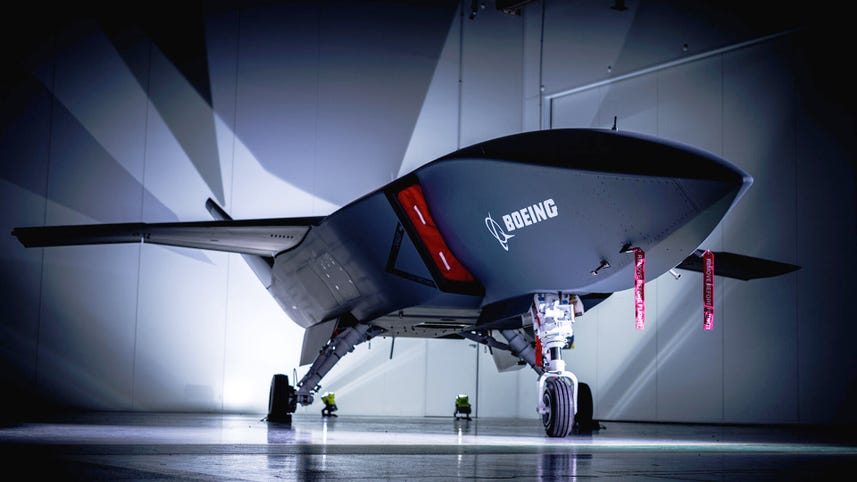
[MUSIC]
This is our first look at Boeing's newest unmanned military aircraft.
Say hello to the loyal wingman.
[MUSIC]
Guys, I've been waiting to see what this thing would actually look like for over a year.
You might remember I told you about it back in March of 2019.
When I say that's a loyal wingman.
You might think I'm talking about that bro who helped another bro get that girl's number at the bar.
Back at then, all we had to look at were renderings.
But what you're seeing now is the first prototype of what Boeing hopes will be the future of air combat.
This was delivered to the Royal Australian Air Force last week.
Two more on the way.
The delivery of this prototype is significant for a number of reasons.
It's actually the first aircraft to be completely designed and built in Australia in more than half a century.
The loyal wingman will be pivotal to exploring the critical capabilities our Air Force needs to protect our nation.
And its allies into the future.
The drone is built to rely heavily on artificial intelligence, but since it's designed to accompany pilots on missions, it's been nicknamed [UNKNOWN] though it can operate independently for solo mission Missions.
How it was built is almost as interesting as the drone itself.
It was both alongside what Boeing calls a digital twin.
Essentially, that's a highly detailed virtual version of the drone.
Engineers create the twin by 3d scanning the parts.
The process seen here on a different aircraft.
Once the twin is complete, engineers can do all sorts of different tasks.
Testings and trainings on it that can be applied to the real thing.
Now the drone is made of advanced composite materials, including what Boeing says is the largest ever resin infused single piece the company's ever produced.
The wings are made up of just two big composite pieces built using a process pioneered on the Boeing 787.
More commonly, Known as a Dreamliner, measuring in at 38 feet long.
The drone has a range of about 2300 miles with what Boeing calls quote, fighter like performance.
[MUSIC]
Also really interesting is the drone is customizable.
t least the nose is kind of like a modular phone.
foiling means nodes can be swapped out depending on the needs of the mission.
It's described as snap on snap off with 9000 cubic inches of The space could be filled with whatever payloads are needed.
So think different tracking systems, radars, weapons, whatever the mission calls for.
Now, it's not clear what the oil wouldn't man cost the bill.
But the driver reports that the goal is to keep these around the same price point as a similar drone being developed.
For the US Air Force called the Valkyrie that costs around $2 million.
[INAUDIBLE] Is still in the early phases.
The drone hasn't taken its first flight yet.
Boeing Australia says they'll start with ground and taxi tests.
Then move on to putting this bird in the sky for its maiden flight later this year.
I for one, I'm really looking forward to seeing what that looks like.
And the implications here go far beyond just military aviation.
I mean, if you think about it, so much of the technology that you and I use every day has its roots traced back to military innovation.
So how do you see this technology transitioning to commercial aviation, particularly at this time during the pandemic, when that industry could really use as much innovation as possible?
Let us know your thoughts in the comments below.
[MUSIC]
You can be my wingman anytime.>> You can be mine.